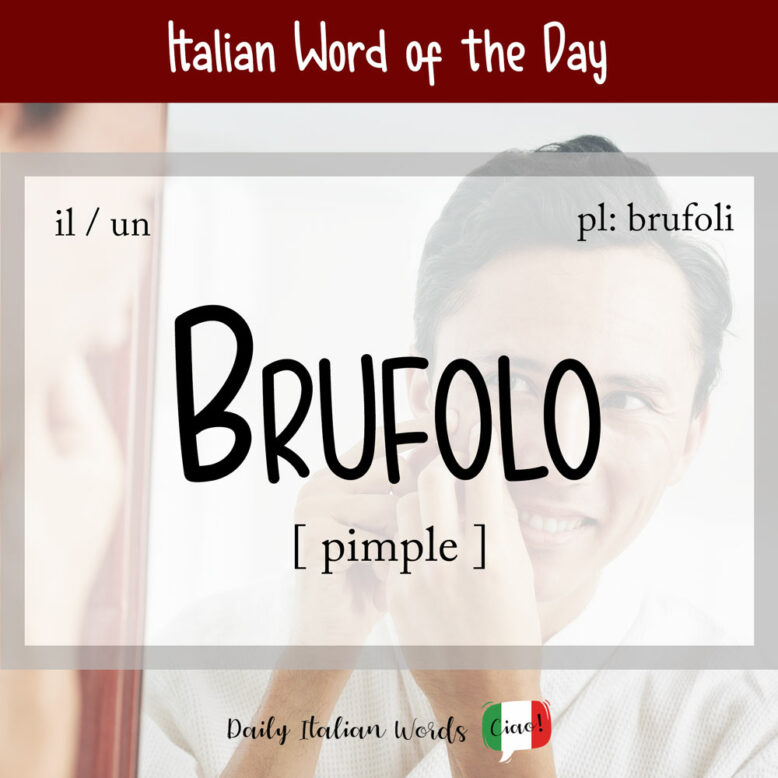Many teenagers and some unfortunate adults suffer terribly from brufoli (masculine, singular: brufolo), the Italian word for pimples, zits or spots. An alternative spelling for brufolo is bruffolo with two Fs. Both are considered correct.

According to Treccani, the word is thought to be a blend of the Latin terms verruca (wart) and rufulus (reddish, ruddy).
The way you’d say to squeeze / pop a pimple in Italian is schiacciare un brufolo or, in even more graphic terms, far esplodere un brufolo (make a pimple explode). Needless to say, the best course of action is to leave them alone (lasciarli stare) no matter how unsightly or painful they are, because popping pimples can cause scars (cicatrici) and skin infections (infezioni).
Non schiacciare il brufolo…rischi che si formi una cicatrice!
Don’t squeeze the pimple…you might end up getting a scar!

Although brufolo is the most common term you’ll encounter across most of Italy, you may hear some of the following synonyms as well:
- acne = acne
- foruncolo = boil, large pimple
- comedone / punto nero = blackhead
- pustola = pustule, small pimple containing pus
You may also hear the diminutive brufolino for a small pimple or the augmentative brufolone for a large pimple.
To say that someone is pimply or spotty, you can use either the adjective brufoloso or the phrases pieno di brufoli (full of pimples) / coperto di brufoli (covered with pimples) to describe them or the quality of their skin.
Quel povero ragazzino ha la faccia piena di brufoli.
That poor boy’s face is covered in pimples.
Heather Broster is a graduate with honours in linguistics from the University of Western Ontario. She is an aspiring polyglot, proficient in English and Italian, as well as Japanese, Welsh, and French to varying degrees of fluency. Originally from Toronto, Heather has resided in various countries, notably Italy for a period of six years. Her primary focus lies in the fields of language acquisition, education, and bilingual instruction.


